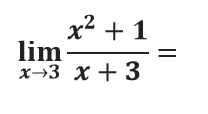-
 Home
Home
-
 News
News
Latest Educational News Stories
Daily update of all national, international news, picture stories, college / university announcements and educational events.
-
 Colleges
Colleges
Pakistan's Largest Database of Colleges and Universities
Explore Largest Directory of Private and Govt. Colleges, Universities and find best institute for your future Education.
-
 Courses
Courses
-
 Admission
Admission
-
 Lectures
Lectures
-
 Online Test
Online Test
Short Question
- 9th Class Physics Short Questions
- 9th Class Chemistry Short Questions
- 9th Class Math Short Questions
- 9th Class Biology Short Questions
- 9th Class Computer Short Questions
- 9th Class English Short Questions
- 10th Class Physics Short Question
- 10th Class Chemistry Short Question
- 10th Class Math Short Question
- 10th Class Biology Short Question
- 10th Class Computer Short Question
- 10th Class English Short Question
-
 Past Papers
Past Papers
-
 Date Sheets
Date Sheets
-
 Results
Results
Exam Results 2024
Check online Results 2024 Matric Inter BA BSc B.Com MA MSc M.Com CSS PCS MCAT ECAT of all educational boards and universities in Pakistan
-
 Study Abroad
Study Abroad
Study Abroad Programs and Opportunities for Pakistani Students
Explore free study abroad search to find programs, consultants, events to study in USA, UK, Australia, China, Malaysia and many others.
-
 Jobs
Jobs
-
 Tutors
Tutors
-
 More
More
-
 Apps
Apps
This online test contains MCQs about following topics:.
- Introduction - Types of Functions - Composition of Function and Inverse of a Function - Limit of a Function and Theorems on Limits - Limits of Important Functions - Continous and Discontinuous Functions - Graphs
FA Part 2 Mathematics Ch 1 Test

FA Part 2 English Medium Subjects
FA Part 2 Urdu Medium Subjects
MCQ's Test For Chapter 0 "FA Part 2 Mathematics Chapter 1 Test Online"
Try The MCQ's Test For Chapter 0 "FA Part 2 Mathematics Chapter 1 Test Online"
-
Total Questions20
-
Time Allowed30
Question # 1


Question # 2
Let f(x) = x2, then range of f is the set of all:
Question # 3
Cosh2 x - Sinh2 x =
Question # 4
Which one is an exponential function ?
Question # 5
Let f(x) = x2 + 3, then domain of f is:
Question # 6


Question # 7


Question # 8
If a variable y depends on a variable x in such a way that each value of x determines exactly one value of y, then y is a __________ of x.
Question # 9


Question # 10
x2 + y2 = 4 is:
Question # 11
f (x) = x secx, then f(0)=
Question # 12
Which one is an identity function ?
Question # 13
A function, in which the variables are __________ numbers, then function is called a real valued function of real numbers.
Question # 14
Let f(x) = cos x, then f(x) is an:
Question # 15
Which one is a constant function ?
Question # 16


Question # 17
Cosh2 x + Sinh2 x =
Question # 18


Question # 19
If a function f is from a set X to a set Y, then set X is called the _______ of f:
Question # 20
If f(x) = |x|, f(x) is a:
12th Class Mathematics Chapter 1 Test
Here you can prepare 12th Class Mathematics Chapter 1 Functions and Limits Test. Click the button for 100% free full practice test.
Top Scorers Of Chapter 0 "FA Part 2 Mathematics Chapter 1 Test Online" MCQ`s Test
-
N Noor ul huda 07 - Apr - 2024 03 Min 24 Sec 20/20 -
A ahmed zuhaib 26 - Apr - 2024 05 Min 57 Sec 20/20 -
E Eman Noor 14 - Apr - 2024 02 Min 32 Sec 19/20 -
R Roshaan sabir 07 - Jun - 2024 03 Min 11 Sec 19/20 -
A A Gh 27 - Feb - 2024 04 Min 37 Sec 19/20 -
S Shah Zaib Ali 04 - Jul - 2023 02 Min 56 Sec 18/20 -
A Ahsan JuTt 12 - Jun - 2023 02 Min 56 Sec 18/20 -
A Abdullah Ali 23 - Sep - 2024 03 Min 37 Sec 18/20 -
N Niha 26 - Nov - 2024 08 Min 35 Sec 18/20 -
M Muhammad Faheem 05 - Jul - 2024 10 Min 01 Sec 18/20 -
A Ali Haider 04 - Dec - 2024 04 Min 37 Sec 17/20 -
N Nafeel Anwar 06 - Apr - 2024 03 Min 04 Sec 16/20 -
S SUMMAIYA FATIMA 07 - May - 2024 04 Min 28 Sec 16/20 -
M M Shehzad 04 - Sep - 2024 04 Min 53 Sec 16/20 -
U Unknown 16 - Oct - 2023 04 Min 06 Sec 15/20
FSc Part II Mathematics Chapter 0 Important MCQ's
| Sr.# | Question | Answer |
|---|---|---|
| 1 | If y = (x), then the variable x is called --------- variable of a function f. |
A. Dependent
B. Independent
C. Image of y
D. None of these
|
| 2 | f(x) = sin x + cos x is ------------ function: |
A. Even
B. Odd
C. Composite
D. Neither even nor odd function
|
| 3 |

|
A. 0
B. 2
C. 1
D. 3
|
| 4 | If the degree of a polynomial function is ------------, then it is called a linear function: |
A. 0
B. 1
C. 2
D. 3
|
| 5 | Cosh2 x - Sinh2 x = |
A. 1
B. -1
C. 2
D. -2
|
| 6 |

|
A. 1
B. 2
C. 3
D. 4
|
| 7 | Inverse hyperbolic functions are expressed in terms of natural: |
A. Numbers
B. Exponential
C. Logarithms
D. Sines
|
| 8 |

|
A. Line
B. Parabola
C. Ellipse
D. Hybperbola
|
| 9 | The symbol y = f(x) i.e. y is equal to f of x, invented by Swiss mathematician-----------: |
A. Euler
B. Cauchy
C. Leibniz
D. Newton
|
| 10 | Which one is an exponential function ? |































Share your comments & questions here
Please sign in to post a comment
No comments yet. Be the first to comment!